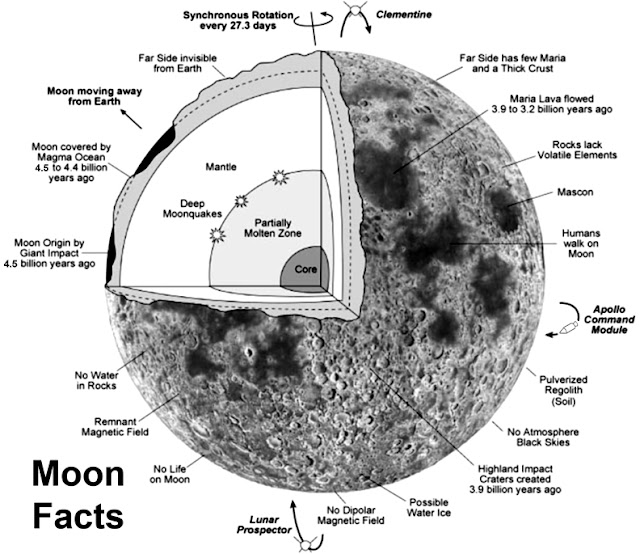Introduction
The idea of this post is to present some of the very basic
properties of the Moon in a way that we can easily relate to, that is by using
Earth comparisons. With this basic information about the Moon we can a tiny bit
of a feeling of what it would be like to visit the Moon.
Size
The Moon has a radius of about one quarter of the Earth's
radius, making it in relation to the planet that it orbits (the Earth), quite
large in fact.
Surface Area
In surface area the Moon has 38 million square kilometres,
making it in surface area slightly larger than the continent of Africa.
Atmosphere
Its atmosphere is almost a perfect vacuum, that is there are
no weather phenomena at all, and the sky is always black. You can see the stars
during the day but the glare reflecting off the Moon’s surface makes it
difficult for the human eye to see them.
Temperature
At high noon the Moon's surface temperature can rise to above
100°C and it can drop to be as low as -150°C at midnight.
Rotation (Day and Night)
The time the Moon takes to rotate once on its axis is 29
Earth days or 708 hours so a day on the Moon lasts 708 hours and from sunrise
to sunset there is about 2 weeks of daylight. That’s one very long day.
Mass
The Moon has about 1% of the mass of the Earth and gravity is
about one sixth as strong on the moon. So if a person weighs 60kg on Earth that
same person would weigh 10kg on the moon.
Summary
Mass: 7.35×1022
kg (1% of the Earth mass)
Radius: 1738km
(27% radius of the Earth)
Surface area: 3.79×107
km (17% area of Earth)
Density: 3340
kg/m3 (3.34g/m3).
Gravity: 1.62m/s2
(17% of Earth)
Average surface temperature: 102°C
day;-153°C night.
Surface temperature in polar areas: -50°C in the light and -230°C in the shade.
End (48).


No comments:
Post a Comment